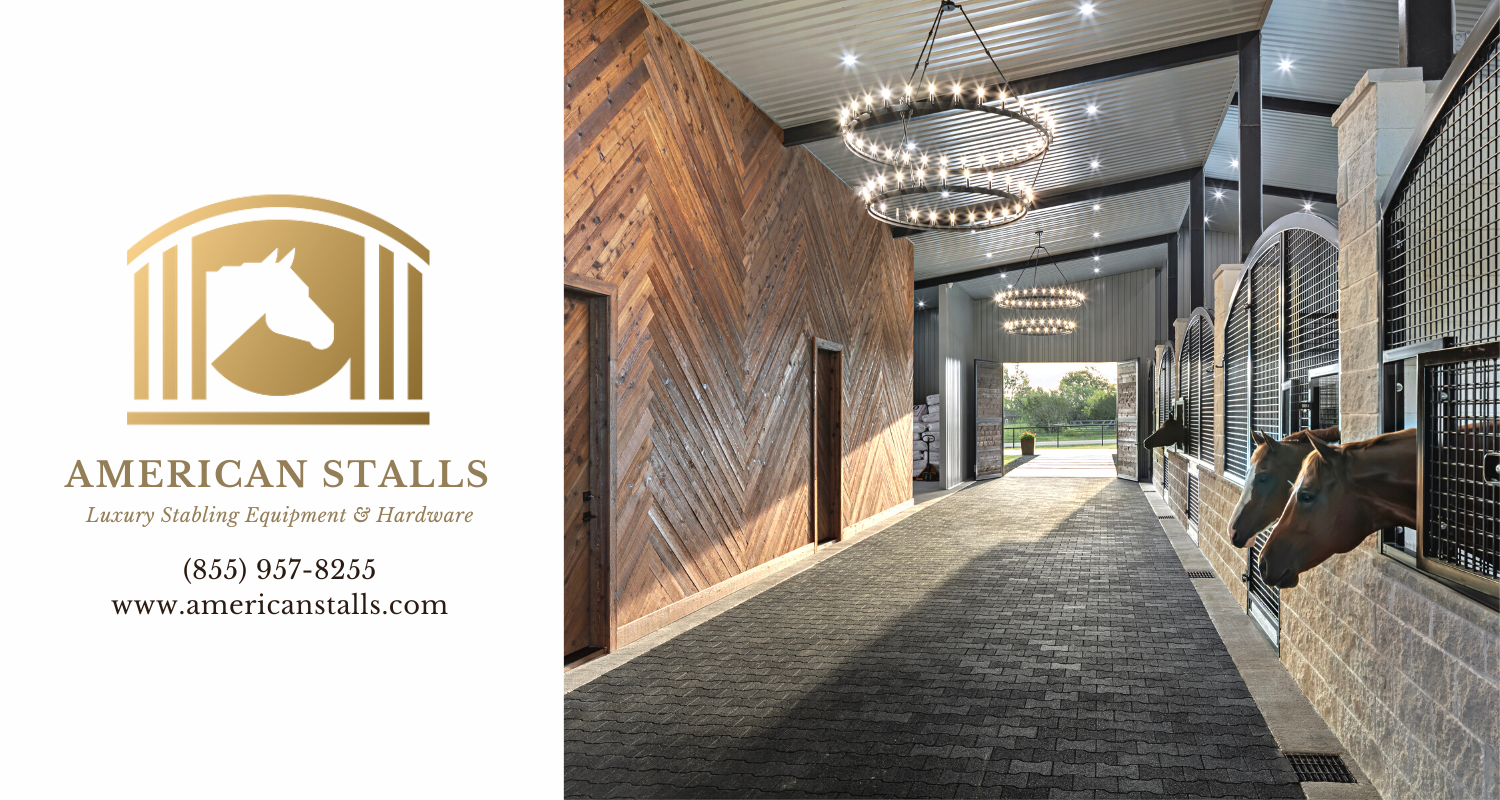There are many factors that go into building a horse barn. A common question for first time barn builders is often about lumber. What kind of wood should you use for your stalls and barn doors? This helpful blog post brought to you by American Stalls explores your options.
Wood and steel are the two primary components in stalls and doors. Whether you’re considering remodeling an existing space or building a brand new barn, it’s important to think carefully about the materials you select. Ultimately the wood you select impacts safety, longevity and project costs.

Material Options
Below is a brief overview of four types of materials commonly used in barn building.
Softwoods
Southern Yellow Pine lumber is a popular option for horse stalls. However American Stalls recommends using the highest grade of wood that is possible for your project’s budget. Softwoods are prone to warping, twisting, and shrinkage over time and are not the best quality option for stalls when it comes to longevity.
Domestic Hardwoods
Hardwoods are more costly than softwoods, but are known to last much longer due to their density. Many domestic hardwood options can also be found in FSC-certified versions. FSC is the Forest Stewardship Council which is an international non-profit, multistakeholder organization established in 1993 that promotes responsible management of the world’s forests. FSC certification ensures that products come from responsibly managed forests that provide environmental, social and economic benefits. Domestic hardwoods include douglas fir, mahogany and oak.
Exotic Hardwoods
Going another step further, are exotic hardwoods. They are extremely dense compared to domestic hardwoods and softwoods. This composition allows them to hold up to the rigors present in a horse stall environment, making them a great option for horse stalls and barn doors. This is one of the most expensive lumber options and includes Brazilian hardwood and sapele (also known as African Mahogany).
Plastic (HDPE) Infills
An alternative to wood includes a plastic HDPE (high-density polyethylene) fill option. These are synthetic materials that are built to look like wood. The benefit to plastic HDPE is their benefits around longevity and durability. The synthetic fill keeps its finish longer. It is also easier to clean so it is a more sanitary material compared to wood. Lastly, HDPE fills use primarily recycled post-consumer plastic which makes for a more positive environmental impact.

Which option is the best for your barn? It depends on your geography and budget. You need to ask your builder about the lumber and how it will withstand environmental factors. Questions to ask include:
Does the lumber have a good nailing holding power?
Is there moderate and reasonable shrinkage?
Is the lumber easy to work with, finish, and clean?
Will the lumber resist decay and warping?
Does the lumber withstand splitting?

Use this information to make your decision on lumber. Contact American Stalls at (855) 957-8255 or complete their inquiry form. The American Stalls team is here to be a resource to help you build a barn that is elegant, safe and built to last.
For even more helpful blog posts from American Stalls be sure to read Tips for Finding the Right Contractor for Your Barn, 4 Tips for Designing a Safer Aisle for Your Horse Barn and The Benefits of Mesh Stall Fronts on Stable Style.







[…] Tips for Designing a Safer Aisle for Your Horse Barn, The Benefits of Mesh Stall Fronts and How to Select the Best Lumber for Your Horse Stalls & Barn Doors on Stable […]